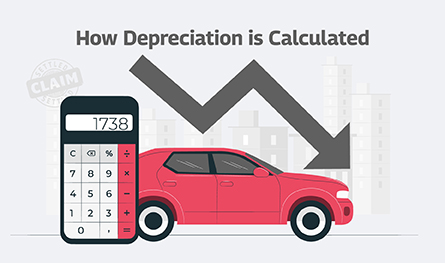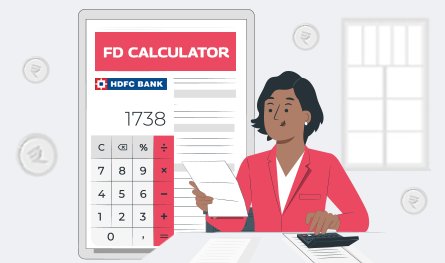What is Solvency Ratio in Term Life Insurance
.png)
.png)
Are you planning to buy a term insurance policy? Don’t forget to check the solvency ratio of your insurer. If you want to know more about it, read the post.
If you want to secure your family and your loved ones, buying a term insurance policy, which is a pure life insurance, is one of the best options. With a term plan, a person can assure the financial stability of his/her family in the event of a sudden demise of the bread earner. Since it plays an important role in the life of your family members, a term plan should be chosen with great care and detailed research.
Here, one key aspect to take note of at the time of buying a term insurance plan from an insurance company is to check the reputation of the company. The reputation of the company is a major factor and it is called the Solvency Ratio of term insurance providers. This factor decides the reputation of the company and if the company can pay the insurance amount to your family in case of your sudden demise.
What is the Solvency Ratio of Life Insurance providers?
In simple words, the Solvency Ratio computes the funds or the cash flow of the insurer and their liabilities. Thus, it helps the insured to understand if the insurer has enough funds to comply with its liabilities.
If the solvency ratio is low, it means that the insurer is not able to manage its monetary obligations and default payments well. And a high solvency ratio means the insurer has enough funds to manage all of its financial obligations.
So, imagine you bought a term insurance plan from a company with a high solvency ratio life insurance to support your family financially. Now, let’s say there was a sudden natural disaster like an earthquake that caused the death of many people. Now, the insurer is flooded with death benefit claims. In such a case the insurer should be capable of paying insurance benefits to all such families who raised authentic claims for their term life insurance.
How Can we calculate Solvency Ratio – Solvency Ratio Formula
Yes, a Solvency ratio formula is there that can be used to calculate the ratio, which is:
(Total Income + Depreciation) divided by Liabilities is equal to Solvency Ratio.
The above Solvency ratio formula help to measure the funds of an insurance company as compared to the total funds of the company that is owned as sum insured. If the company has more assets as compared to its liabilities, the ratio of solvency remains high.
Is Solvency Ratio of Life Insurance Companies important? Why?
A Term insurance policy offers monetary protection to the family of an insured individual in case of unfortunate death of the policyholder. So, as a policyholder you buy a term policy and agree to pay the premium of the policy regularly. Similarly, the insurer agrees to cover your life and financially secure your nominee in case of a sudden event. Further, the insurer agrees to pay death benefit to the family of the insured as per the agreed sum assured at the time of buying the policy.
However, you must understand that an insurance company receives several claims on a daily basis from customers . And to offer death claims to all their customers, the company has to be financially stable. So, it is important that the company has enough funds to support the claims of their customers. Thus you need to know the solvency ratio of insurance companies.
Solvency Ratio enables the insured to find out the financial condition of the insurance company to see if the company is strong enough to pay for claims. This way, you can be sure that the insurer you are trusting your family’s financial needs with, would pay back to them the sum assured amount on your demise.
What does IRDAI direct about Solvency Ratio?
From the above discussion it is clear that Solvency ratio plays a crucial role that requires consideration at the time of buying a term insurance. Looking at the importance of solvency ratio, IRDAI has made it compulsory for every insurance company to have a solvency ratio of 1.5 along with a solvency ratio margin of 150%. Thus, this is considered a safe margin of solvency.
Now, what is the solvency margin? Solvency margin is the added capital that an insurance company is required to possess in addition to the death claims that the company is likely to incur. This extra fund acts as a monetary support that allows the insurer to pay off death claims in extreme cases.

Author Bio
Paybima Team
Paybima is an Indian insurance aggregator on a mission to make insurance simple for people. Paybima is the Digital arm of the already established and trusted Mahindra Insurance Brokers Ltd., a reputed name in the insurance broking industry with 17 years of experience. Paybima promises you the easy-to-access online platform to buy insurance policies, and also extend their unrelented assistance with all your policy related queries and services.
Other Life Insurance Products
Latest Post
So, you’ve crossed the fabulous 60 mark. Retirement may be on the cards, your kids might be off doing their own thing, and suddenly your knees are making more noise than your WhatsApp notifications. Welcome to the senior citizen club.
Now let’s talk about something most of us tend to postpone until a doctor gives us a reality check: health insurance. If you are wondering whether buying health insurance after 60 makes sense, the answer is a loud and clear yes. This article will cover everything you need to know about it, how it makes sense, how it differs from health insurance for young adults, and what you need to look out for when checking for medical insurance above the age of 60.

.png)
April 2 is observed as World Autism Awareness Day and there is no better way to observe the day than to raise awareness of this condition and to promote kindness towards autistic people. Read on to know more.


Car depreciation implies the difference between the cost of a car at the time of buying the car and when you sell it. A car insurance claim amount is determined by the car depreciation rate. The car depreciation rate is the reduction in the value of your car over its lifespan caused by wear and tear.


Fixed Deposits (FDs) are one of the safest ways to grow your savings. HDFC Bank offers attractive FD interest rates, allowing you to earn guaranteed returns on your investment. But before you invest, it's important to know how much interest you will earn and what your final maturity amount will be.


If you think of life insurance, chances are you are picturing something people buy in their 30s or 40s. But what if you are 65 or older and just getting started? The good news is that you are never too late. Whether you are thinking of easing the financial burden on your family, covering final expenses, or simply leaving behind a legacy, there are life insurance options tailored just for you.
This article will be a guide to life insurance for senior citizens above 65 years, explaining why it is important, the type of insurance options, and how to get the right policy for you.




